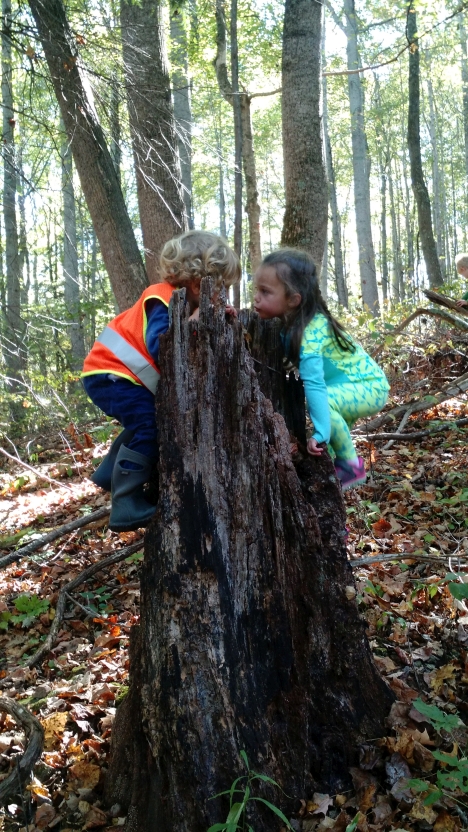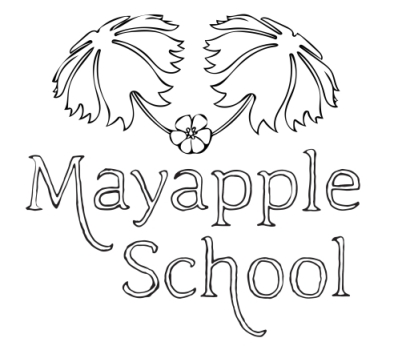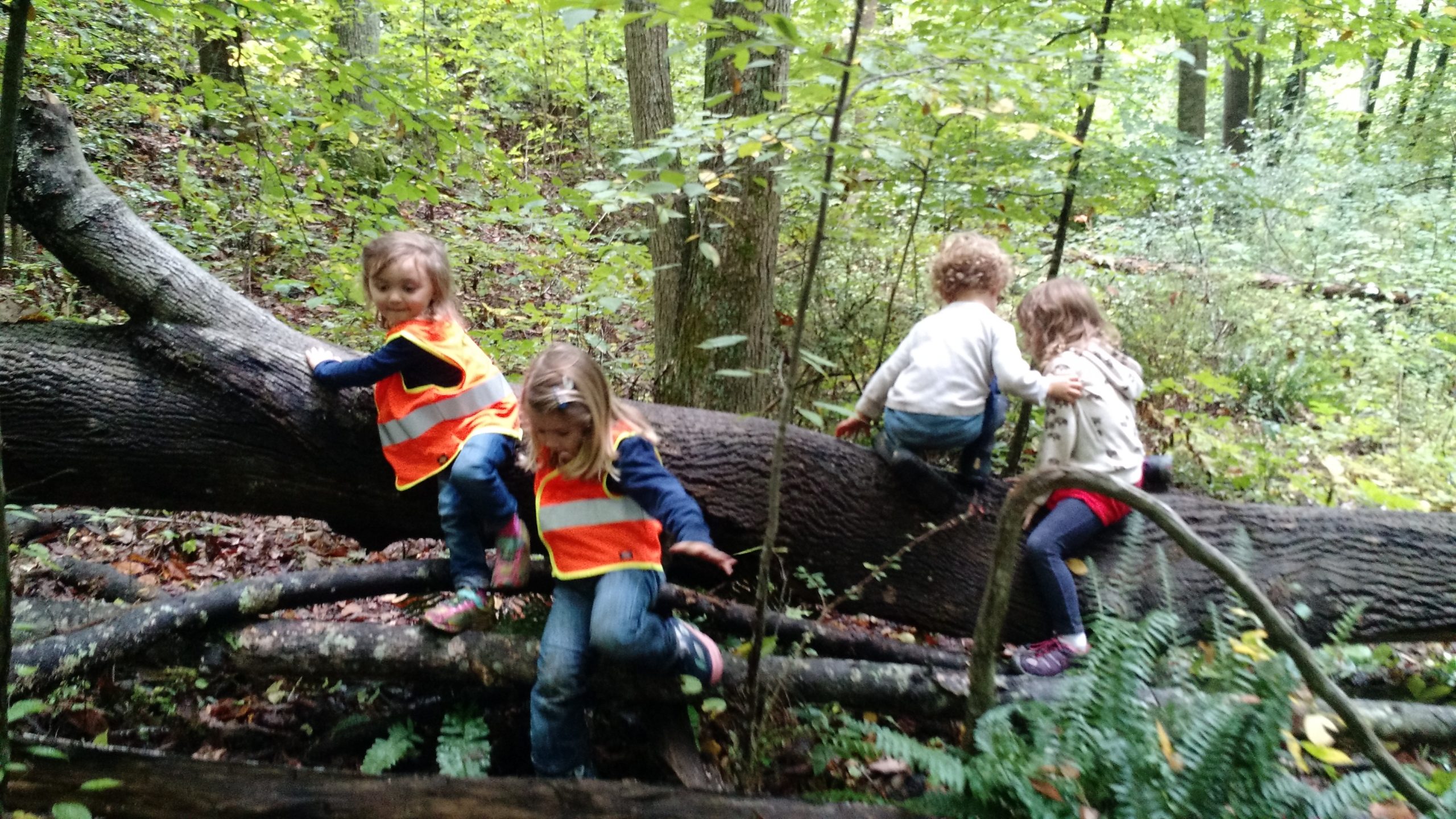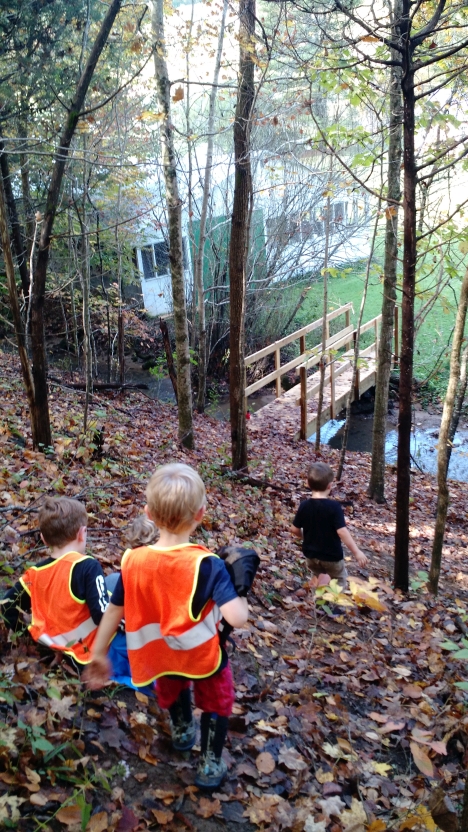Well, we did it. The forest isn’t a scary place anymore. Crying, asking for mommy, hiding from lions, asking “are we lost?” 120 times per hour—it’s all over, and it’s only November. Now we have the rest of the school year to enjoy the confidence and comfort we have gained in the wilderness. Just don’t remind me that I have to do it all again next year.
“ Wait— what??? Children cry when you take them into the wilderness? I thought forest preschool was an idyllic wonderland where, playing under the boughs of graceful hemlocks, children are immediately and magically imparted with a mature sense of self control, risk- assessment, and confidence. The fairies themselves whisper ABC’s and 123’s into their ears. And children in the forest certainly never fight! At least, that’s what all of the Forest Kindergarten Blogs say.”
I’m sorry. I’m here to tell you that it’s not quite true. Adjusting to school in the wild takes a certain amount of down-and-dirty grit that has never been asked of most preschoolers before. Some embrace it. Others cry, loudly and with snot streaming out of their noses, as they insist upon tackling the hardest challenges. Others shy away from the challenge of simply being within the trees. They don’t know how to walk on steep ground. And how can it be true that no one is going to carry them, or save them from the challenge? The unfairness overwhelms! And yet, they have no choice but to overcome.

When given the opportunity, children choose challenge. With the absence of branches, children must find small handholds on this rotting stump.
And here’s the thing. They can all do it. They all do. And the rewards ARE endless and almost unbelievable. But it’s not immediate, and it’s not a miracle. And throughout the year, I know that children will still be children. They will miscalculate risk and scrape their knees when they don’t quite make the jump from one stump to another. They will argue about who gets to be first in line on a tight path through the forest. They will all struggle, some for just one day, other continuously – how do I remain focused on this story, behave kindly to my classmates, count just one thing at a time?
So maybe you’ve decided to take your group a little further into the forest, and suddenly bedlam erupts. One child starts crying, insisting she just can’t climb over the log that is in her way. Suddenly, three other children remember that they want their mommies, and start crying too. Some children look on with wide eyes, but another starts running to get away from the noise and trips over a greenbrier. She, of course, starts screaming for a band aide. Then all of the other children want band-aides too. As you give out your entire supply of band aides, you think to yourself: this isn’t what they said it would be like. I must be doing something wrong. Clearly all of the good things children can gain from being in the forest don’t apply to my group. We’re not going in here again.
Please don’t give up. The great benefits of nature immersion do apply to your children. I have a student who, upon seeing the forest for the first time, stopped dead in his tracks, eyes wide, and said “I’m not going in there! There are things in there.” A month later this student was climbing trees, all fear forgotten. This past week he sat down upon the leaves on the forest floor, looked up, and with a broad smile upon his face and completely unprompted, said “I love the forest. I love it in here.”
That’s why we do it. As children experience and learn about the forest, they form a whole-self connection to the forest. The forest becomes a place where the mind, body, and spirit can become refreshed. As we learn about and explore the forest, it becomes a place of well-being and a resource that children can tap into, now and forever. The forest is a natural haven for the growing child, and for the adult she becomes. As the forest cares for her, so she too will care for the forest.
In the next blog posts, I will share specific elements of our Forest Education program that helped transform the forest experience for our students. Hopefully you will be able to use some of these ideas where you live or teach, too. So, go on. Buy some more band aides. It’s time to step into the forest again.



